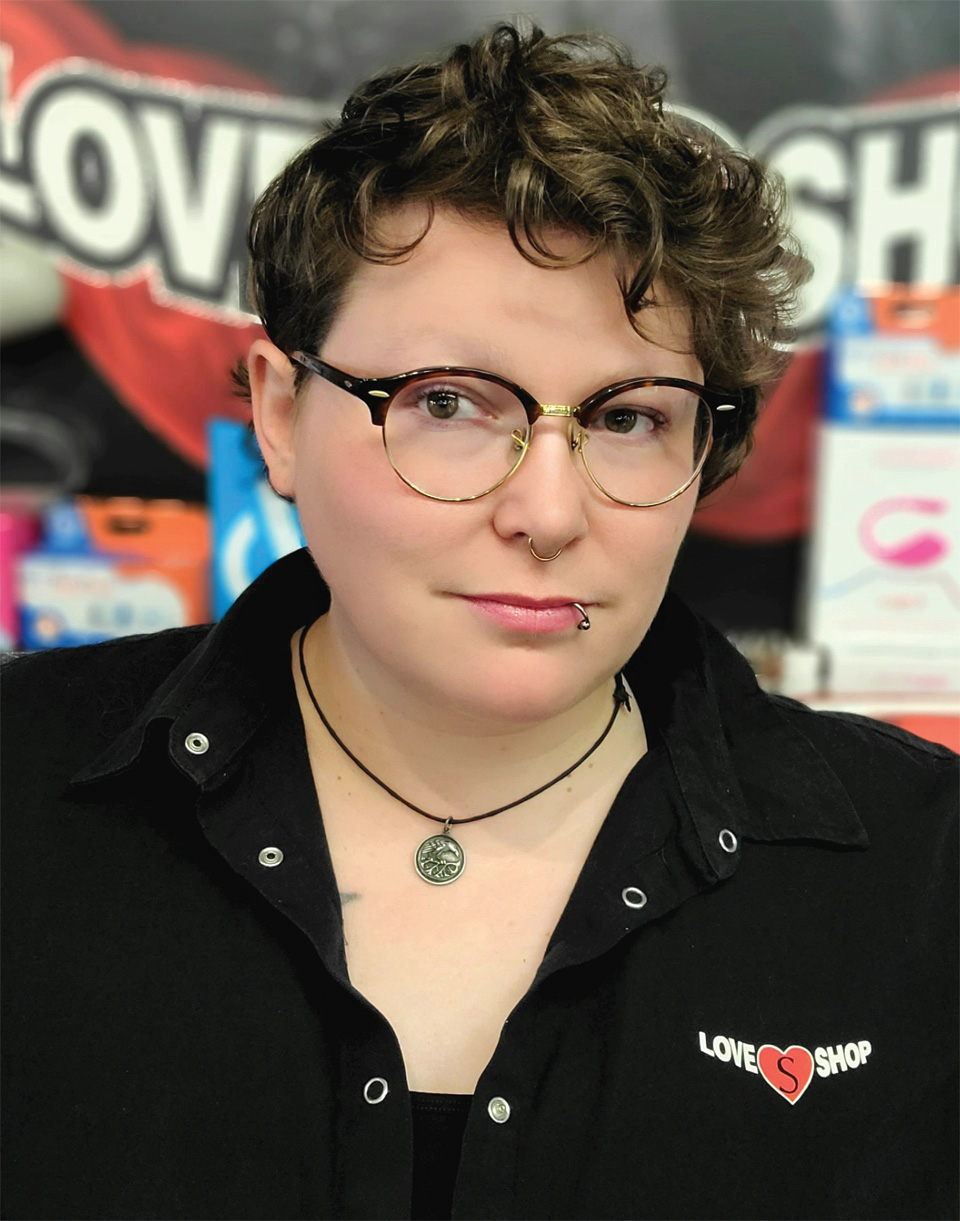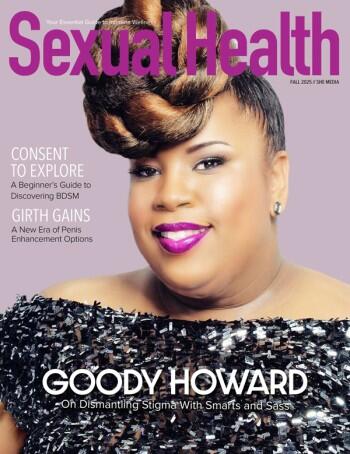Zoomers have entered the chat!
“Zoomers,” another term for Gen Z, is a play on “boomers.” It references the fact that — unlike their millennial and Gen X predecessors, who had to acclimate to the digital world as it was still dawning and exponentially growing — this generation grew up in a world that was already fast-paced and technology-driven.
What does that mean for the pleasure industry?
Up until the 1990s, reaching new target customers meant relying on grassroots marketing initiatives like radio ads and in-store activations. The most direct way to access Zoomers is via social media. It is second-nature to them, their natural milieu. They have never experienced life without it.
Here is every major social media platform that debuted from 1997 to 2012, the birth window generally used to define Zoomers. SixDegrees, generally recognized as the first social media platform, launched in 1996, one year prior to Gen Z’s grand entrance. Then came AOL Instant Messenger in 1997, followed by Hot or Not (2000), Friendster (2002), LinkedIn (2003), Myspace (2003), Facebook (2004), YouTube (2005), Reddit (2005), Twitter (2006), Tumblr (2007), Foursquare (2009), Grindr (2009), Instagram (2010), Pinterest (2010), Google+ (2011), Snapchat (2011), and Twitch (2011).
“This is a generation that has experienced social media becoming the biggest communicative and marketing tool by the time they were teenagers,” says Shae Annis, co-founder of Like a Kitten. “As a result, many of their buying decisions are informed by social trends.”
That is especially significant for the pleasure industry. According to one study, 50% of Gen Zers use social media to research brands. Social media makes it easy to shop at a sex toy store without actually having to set foot inside one. It also extends a completely different educational experience than what a third-party marketplace or mass retailer can offer.
“Social media plays a huge role in shaping Gen Z’s attitudes toward pleasure products,” observes Kris J, a store manager for Canada’s Love Shop chain. “From their peers, as well as from millennials, they learn about new technology, pleasure products and innovative ways to use them in safe and sometimes unconventional ways.”
Viben Director of Brand Development Char Lopez adds, “Social media platforms like Instagram, Tik Tok and Twitter provide accessible information about pleasure products. Influencers and brands use these platforms to share educational and informative content, including reviews, features and benefits, in a way that is engaging to Gen Zers.”
The result?
“Many Gen Z members are very sexually open, which has made buying pleasure products more normalized in their generation,” says Annis.
Of course, Gen Z arguably had a bit of a head start in that direction, since by the time they appeared on the scene, even their parents’ preferences had begun to skew less “Magic Wand massager” and more “Deluxe Pearl Rabbit Vibe,” thanks to that infamous 1998 “Sex and the City” episode. Now, as a generation deeply committed to self-discovery, diversity and education, many Gen Zers see sexuality and gender as an ongoing journey of introspection, exploration and acceptance.

Sexual wellness brands can lean into this mindset by celebrating Gen Zers for their curiosity, openness and desire to learn more about themselves — and about the products they invest in, since many Zoomers are also very socially conscious. As their influence grows both online and IRL, this mindset has begun reshaping attitudes about sexual wellness and ushering in a wide range of trends driving today’s pleasure market. Rejecting traditional gender roles and embracing sexuality as a spectrum, Gen Z has inspired the pleasure industry to become more inclusive and create products that are welcoming to all kinds of preferences.
Exsens North American Brand Manager Rebecca Pinette-Dorin believes that online access to different kinds of sexual play has opened the eyes of Gen Z, making them unfazed — as well as more likely to take their time before actually getting physical.
“Unlike previous generations, they are waiting longer to put this knowledge into action,” Pinette-Dorin notes. “They flirt more beforehand online, and are careful of toxic relationships.”
Kris J says Gen Z is more open to communicating their wants and needs, which helps lessen stigma surrounding sex.
“Something that previous generations considered taboo is now freely discussed, contributing to healthier sex lives, relationships and general well-being,” Kris J elaborates.
Annis adds that Gen Z extends that same openness to online community, speaking out about their sexuality even beyond their friends and peers.
“Thanks to social media, Gen Zers have been able to access and meet a plethora of people with the same interests or identity as them,” Annis says. “This makes talking openly about sex and sexuality much less intimidating and shameful. Gen Z is successfully assisting in removing the mindset of shame around sexuality and sex.”
Diversity Matters
Recent years have seen Gen Z customers call upon manufacturers to incorporate more diverse faces and bodies in their marketing and packaging, and to change product descriptions so as not to exclude genders or nonbinary shoppers.
“Gen Z’s preferences for inclusivity and diversity have helped create a shift in marketing strategies,” says Todd Baratz, a sex therapist and expert member of plusOne’s Wellness Collective. “There’s an increased focus on providing authentic representation of diversity — like campaigns emphasizing body positivity, acceptance and a variety of races, body types, genders and sexual orientations. Due to their liberal social values, most Gen Z customers gravitate toward brands that are transparent about their values and not only provide great products, but also have an ethos congruent with the general consensus among the Gen Z population, specifically with social justice- and community-focused messaging.”
Annis points out that some brands outside of the pleasure industry have felt the effects of cancel culture and have gotten a bad reputation for not evolving their image.
“Gen Z finds representation for all in marketing very important,” she says. “Gen Z likes to see a normal mixture of body types, races and genders represented in a brand, as that is what we see when we step outside. It is not just one race or gender using pleasure products.”
Pinette-Dorin agrees that Gen Z tends to have a zero-tolerance policy for brands that do not take racial and body diversity into account.

“If you are not already marketing your products with this in mind, you can basically forget about both Gen Z and millennial customers,” she says.
Some Gen Z characteristics can even complicate brands’ efforts to target specific users, such as the fluidity of gender and sexual identities among Zoomers.
“Gen Zers have such pride in their identity and what makes up that identity that it is almost impossible to make everyone feel seen in the marketing of pleasure brands,” Annis says. “Within our company, we have many talks about how to extend our demographic while also not abandoning the customers with whom our style and products already resonate.”
Viben’s Lopez credits brands that are adopting more inclusive representation, gender-neutral messaging and social responsibility in their marketing strategies.
“By prioritizing authenticity, transparency, community engagement and partnership with diverse influencers, companies can better connect with Gen Z customers and build lasting brand loyalty,” she says.
Self-Care Generation
Being constantly connected has also amplified pressures on Zoomers. Combined with economic uncertainty and global issues, this has increased Gen Zers’ awareness of mental health and made self-care an important part of their lives. Gen Zers may experience more anxiety and depression than previous generations, but they are also more likely to seek out therapy, professional help — and sexual wellness.
“Gen Z’s emphasis on mental health and self-care intersects with their consumption of pleasure products, framing sexual wellness, sexual freedom and sexual integrity as crucial aspects of overall well-being,” Baratz says. “These products are often categorized as essential components of self-care and beneficial to their overall sexual experiences.”
Annis agrees that the mental health awareness ingrained in Gen Z culture carries over awareness of sexual health.
“Masturbation is a healthy and normal thing to do, so within the Gen Z community, it is often celebrated from a mental health standpoint,” she says. “On the flip side, though, there is more open dialogue on things like sex and porn addiction, which can negatively impact the reputation of certain pleasure products. The honesty surrounding mental health is a great way for pleasure companies to learn what Gen Z is interested in.”
Thanks to social media, the stress-relieving benefits of masturbation have become more widely known, making it more acceptable to indulge in. Kris J sees a direct connection between being more open about pleasure products and improving mental health.
“Past generations, unfortunately, were less aware of mental health struggles and how pleasure can affect our moods,” Kris J says. “We now know that during orgasm the body releases dopamine and oxytocin — aka the ‘feel-good’ and ‘love’ hormones — which may help lessen stress. These days, there is a lot of negativity and worrisome events happening, so by using pleasure products, we help our body produce these hormones that are vital for our self-care and mental health.”
According to Lopez, Gen Z shoppers are seeking products that they can integrate into holistic self-care routines to promote relaxation, relieve stress, support body positivity and align with ethical values.

“By focusing on education, community and personalization, brands can meet the needs of Gen Z customers, enhancing their overall well-being and fostering a positive relationship with their sexual wellness,” she advises.
What Gen Z Wants
Zoomers’ social values, such as inclusivity and sustainability, are influencing the design, functionality, materials, ingredients and marketing of pleasure products, while their tech savviness and desire for unique solutions is driving innovation in sextech. There is now a wide range of app-compatible toys complete with online communities to share experiences and usage tips with.
“Having a toy option where you can connect to your iPhone and control it from anywhere seems to be influenced by Gen Z’s interest in convenience through technology,” says Annis. “Packaging is also a high selling point for Gen Z. They like to see a package that is high-quality, looks pleasing to the eye and is eco-friendly. Because products in every category are now so easy to reproduce, Gen Z often looks at packaging quality when determining which version of a product to buy.”
Kris J says that Gen Z customers are looking for items that are body-safe, environmentally friendly, recyclable, inclusive and offer a wide range of functionalities. Pinette-Dorin agrees, noting that Zoomers utilize social media to research companies’ stances on gender, race, sexuality and the environment.
“Because they are so aware of environmental problems, they are much more likely to go for all-natural ingredients,” Pinette-Dorin says.
Meanwhile, Gen Z’s emphasis on inclusivity has boosted the popularity of gender-affirming products, which are being marketed to everyone to facilitate exploration of different gender identities.
“Strap-ons, packers, binders, STP devices and breast forms that don’t cater to traditional gender norms are highly sought-after,” Lopez reports. “Brands that market these products with inclusive language and diverse representation are particularly appealing to Gen Z.”
Michael Guilfoyle, director of international marketing and business development for XR Brands, credits Gen Z’s openness for paving the way for such products.
“A lot of the things that the industry wasn’t doing in the past are now becoming normalized, like the trans lines,” he says. “Five years ago, there was still some resistance. We didn’t want to offend anyone if we did it wrong, and now we’re seeing more acceptance.”
With a relative in hormonal care who lives in a small town, Guilfoyle has seen firsthand how having access to gender-affirming items, such as XR Brands’ penis or pussy panties, or wearable silicone breasts, can help a person who is transitioning.
“She didn’t even imagine something like that existed,” he says.
With pleasure products receiving informative online exposure on their favorite social media channels, Gen Zers are open to trying everything from beginner-friendly vibes to hardcore BDSM items. For that reason, Kris J says, it was Gen Z that helped catapult air pulse toys to viral fame.
According to Annis, Zoomers still find classic vibes appealing, but are especially drawn to toys that look unique.
“From what I’ve seen, Gen Z enjoys a nice mixture of the old and the new when it comes to pleasure products,” she says. “For example, the standard function of a bullet continues to be a must-have for women. That being said, Gen Z buys so heavily based on appearance and aesthetic that if there are two bullet options, but one is a fun shape or has an eye-catching color, it is likely that they will opt for that instead of a traditional black bullet. Products that can be used both individually and with a partner are also popular. Gen Z is still at the age where they might have a long-term partner or they might not, so products that are multiuse seem like a better investment.”
The versatility of multiuse toys is also empowering to Gen Z users who don’t want to be told how to use their toys.
“Let people use their imagination,” says Sexual Desires Director of Sales and Marketing Taylor Means. “I don’t call it a G-spot toy. It’s a multi-stimulator, multiuse vibrator because they want to be able to be creative. They don’t want to see toys that are gender-specific or body part-specific anymore because we’re trying to accommodate a lot of different bodies. I think they’re tired of seeing things called ‘clitoral stimulator’ or ‘G-Spot stimulator,’ because it can stimulate a lot of different parts of the body.”
In the lingerie department, Gen Z wants the versatility to wear their lingerie as a stylish outfit beyond the bedroom. Allure account executive April Hoopes believes that somewhere along the way, younger generations stopped wearing lingerie as part of their intimate date nights. She’s working to bring it back.
“We did a few styles that could be worn out, such as a bodysuit that can be worn with jeans and a jacket,” she says. “You can wear it out and then you get home, you take off that outerwear and you’re ready for sexy time. That lingerie doesn’t have to just be a one-time thing. We have to start stressing the importance for them that it’s not just about one thing, it’s about the whole fantasy.”
Versatility also means that shoppers get more bang for their buck, which is important in this economy.
“If you’re a young adult trying to save, but trying to live your life too, you want to make sure that you’re really getting value in the pieces that you buy,” says Coquette International Marketing Director Jacqueline Macleod. “I think fast fashion is dying out a little bit. It was really popular, but now Gen Z is looking for premium product with the quality behind it.”
Guilfoyle believes that Gen Zers’ fondness for cosplay and anime has made them open to fantasy-inspired pleasure products.
“The initial response from the older generation was really skeptical about Creature Cocks,” he notes. “But 20-somethings and young 30-somethings immediately see the appeal.”
XR Brands Senior Sales Exec Heather McNeely sees that appeal as relating to sex becoming so normalized among Zoomers.
“It’s a way to resonate with not thinking of sex as only traditional missionary-style penis-in-vagina,” McNeely explains. “Studies are showing that Gen Z is having less sex. Why? First of all, it’s less taboo. Second, they do almost everything online so they’re not outside socializing; they don’t communicate. We have to be able to pivot to what they’re looking for, because traditional bestsellers aren’t necessarily going to cater to the next coming customer demographic.”
Social Media Strategizing
It goes without saying that adult brands have to work twice as hard to get shares or word of mouth on social media, due to platform restrictions and censorship. Many social media accounts are shadow-banned without even knowing it, and struggle to achieve visibility to even 5% of their followers, not to mention the difficulty reaching everyone else.
Even if your brand successfully navigates content policies, though, that is still just half the battle. You still have to come up with content that will actually resonate enough to move the needle, catch lightning in a bottle and ride the algorithm into social media users’ feeds.
Today’s 2 billion-plus Gen Zers are becoming a key demographic with money to spend, so businesses that want to stay relevant and competitive need to figure out how to cater to this audience. However, marketing to Gen Z is different compared with past generations. Zoomers are highly sophisticated in terms of social media literacy, having been inundated with ads and fluffy marketing campaigns for as long as they can remember. They have different motivations, priorities and values, so antiquated social strategies are unlikely to resonate with them. That makes it more important than ever to double down on a highly effective social media strategy… but what does that look like?
Kris J says that when it comes to resonating with Gen Z customers on social media, honesty is the best policy.

“I’m very honest about products, their use, outside-of-the-box thinking regarding use, as well as customer testimonies,” shares Kris J, who favors short informational clips that highlight positives and negatives “with full transparency” — like a raw, two-minute product review — versus reciting generic or scripted content.
This approach reflects statistics on where Gen Z social media users spend their time online. A 2023 study of iOS users in the U.S. revealed that Gen Z users are most active on YouTube, Instagram and TikTok, in that order. Most pleasure brands focus their time and resources on creating Instagram content, but have yet to tap into the potential of YouTube — not only as a way to reach Zoomers, but as a platform to monetize.
Future customers want and deserve accurate and inclusive education about sex and relationships, but they also need to feel empowered by these conversations and comfortable with themselves. Whatever your message is, articulating it in a memorable way is nonnegotiable.
“They might like and follow for flash sales, and they are definitely ready for the impulse buy,” Pinette-Dorin says. “But what they really want from brands is information, education and shareable fun.”
Integrating humor and educational content that offers actionable tips or solutions to Gen Zers’ pain points is another component of intentional messaging.
“Gen Z has gained a reputation for not taking themselves too seriously and they really appreciate authenticity,” Annis shares. “This could mean something as simple as a ‘behind the scenes of a trade show’ post or a funny and relatable ad.
“Gen Z became so open about pleasure products and sex with the aid of relatability and humor,” she adds. “Those two things sit perfectly in Gen Z’s comfort zone, so they are great tools to use when marketing something that traditionally is a bit uncomfortable. Gen Z is also a very visual group, so oftentimes aesthetically-pleasing ads or nice-looking social media posts alone may make your brand look more trustworthy to Gen Zers.”
Social media undeniably shapes Gen Z’s perceptions of products across all industries. Yet even more profound is the level of insight Gen Z can provide to brands about their own identity. Ask not what Zoomers on social media can do for your bottom line; ask what you can do for Zoomers on social media, and watch how that nurtures their future pleasure product shopping.








